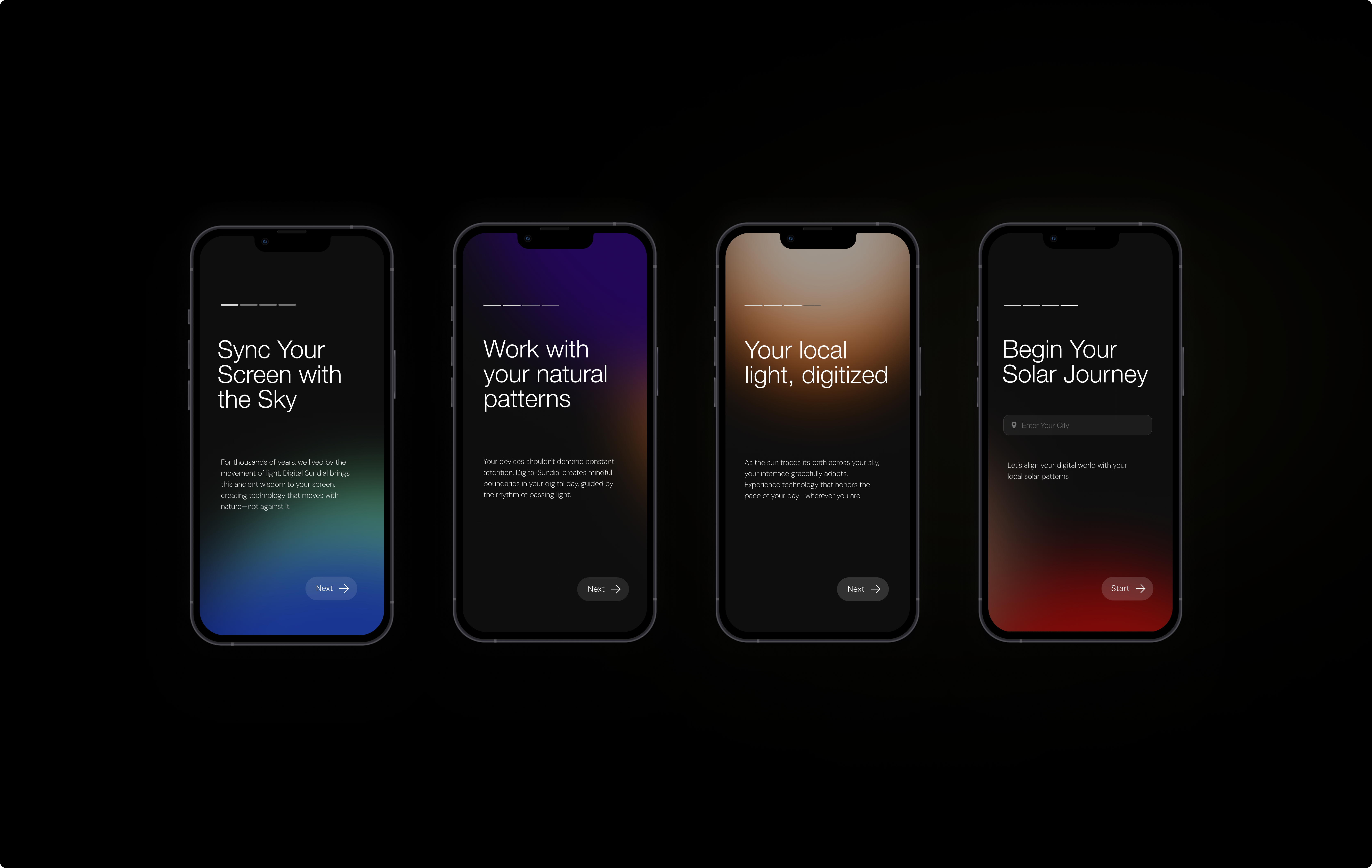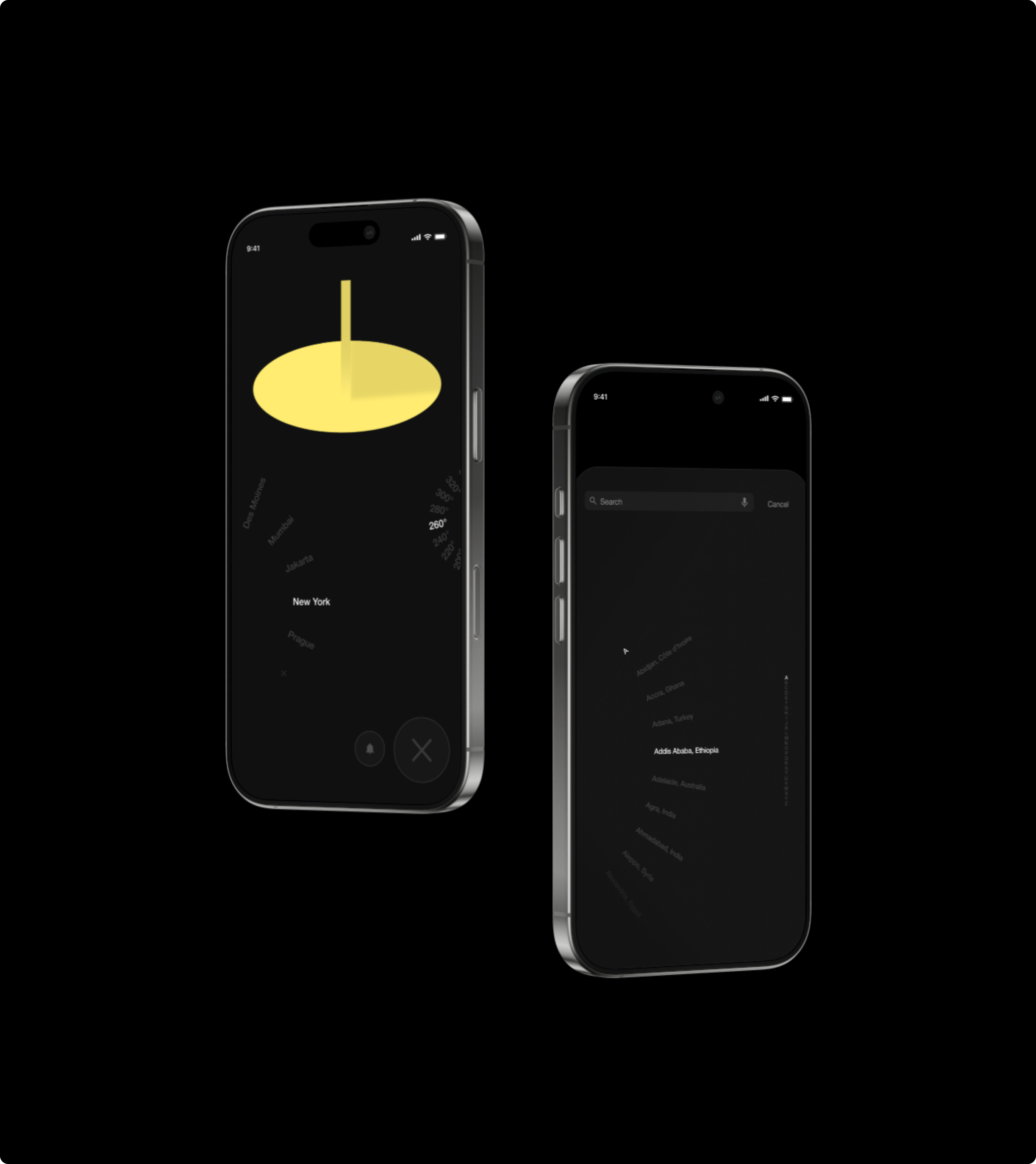Overview
Digital Sundial reimagines productivity tools through the lens of natural time, challenging the 'always on' culture of modern technology. The project proposes a navigation system inspired by celestial mechanics, where interface elements mirror planetary movements and sundial shadows. By intentionally embracing natural limitations—like the inherent darkness in a global sundial widget—the design creates digital experiences that enhance rather than suppress our connection to natural rhythms. and start the process of healing our relationship with technology, in a way that still embraces it.
Project Debrief
Problem Space
Modern technology's "always on" culture has created a disconnection between digital experiences and natural rhythms, leading to:
- Increased anxiety from constant connectivity
- Loss of natural time awareness
- Digital fatigue from endless notifications
- Deteriorating work-life boundaries
Key Insight
Users don't want to abandon technology—they want to transform their relationship with it. The solution isn't less tech, but more thoughtful tech.
Opportunity
Create digital tools that intentionally embrace natural limitations and rhythms, making technology work with—rather than against—our natural patterns of life.
User Profile
The Mindful Tech User
- Values technology but feels overwhelmed by it
- Seeks balance between digital efficiency and wellbeing
- Interested in mindfulness but practical in approach
- Wants solutions that fit into existing habits
Key User Needs
- Natural boundaries without complete disconnection
- Subtle reminders of time's natural flow
- Tools that encourage mindful tech use
- Integration with existing digital workflows
Research Methods
Literature Review
- Studies on digital wellness and tech addiction
- Research on circadian rhythms and productivity
- Analysis of "slow technology" movement
Competitive Analysis
- Digital wellness apps focus on restriction
- Time management tools lack natural rhythm integration
- Gap in market for positive tech experiences
Key Findings
- Users resist purely restrictive solutions
- Natural cycles can reduce decision fatigue
- Visual metaphors increase feature adoption
- Subtle nudges outperform hard limits
Project Goals
Primary Objectives
- Create a widget system that reflects natural time
- Design interfaces that embrace natural limitations
- Build tools that enhance rather than suppress natural rhythms
- Develop features that encourage mindful tech use
Success Metrics
- Reduced notification response anxiety
- Improved sense of natural time passing
- Higher user satisfaction with tech boundaries
- Sustained engagement with core features

